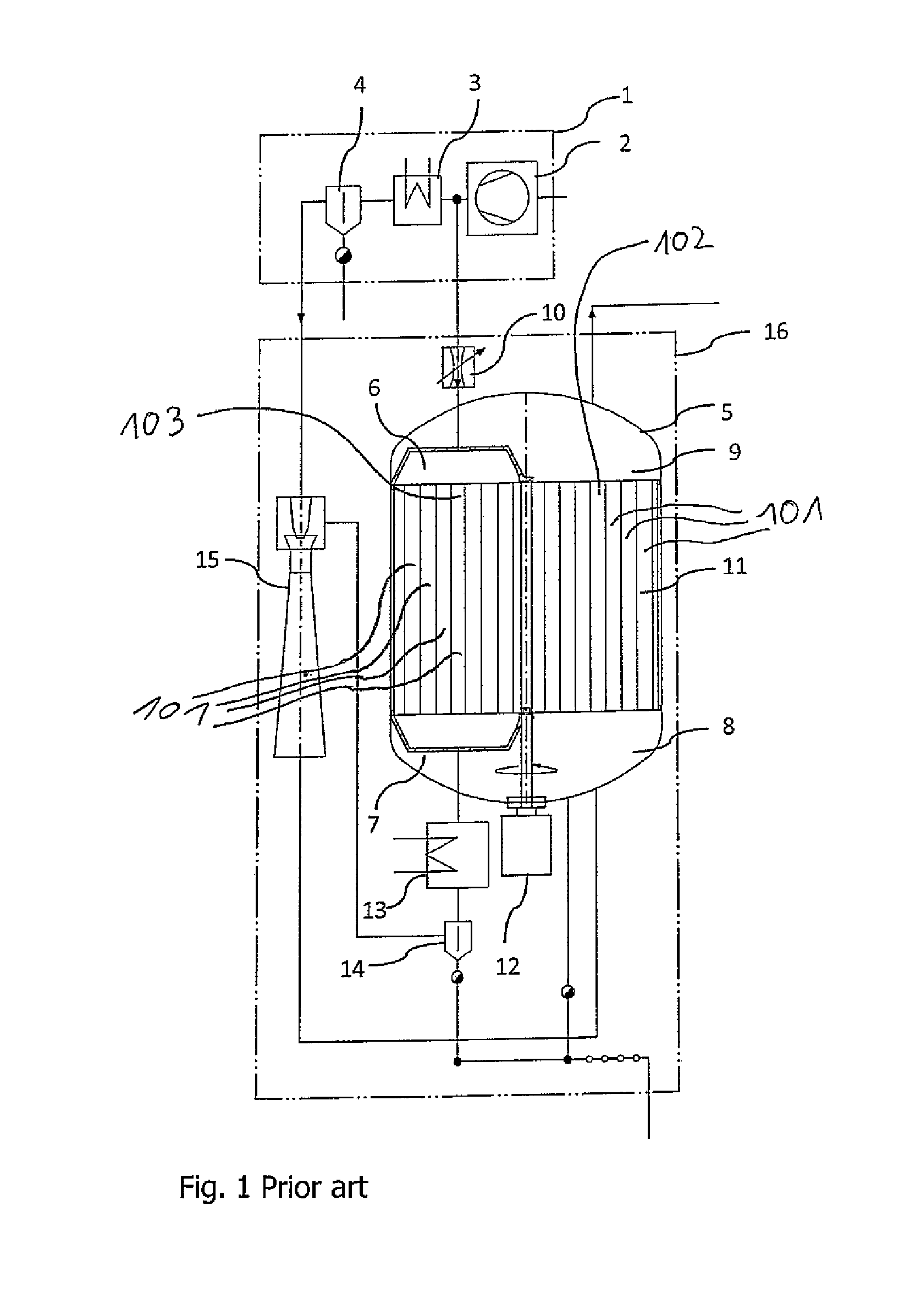Adsorption drying apparatus and adsorption drying method
a drying apparatus and adsorption technology, applied in the direction of electrostatic separation, emergency control system, electric supply techniques, etc., can solve the problems of insufficient regeneration capacity within the drying sector, minor heat available for regenerating, disadvantageous methods according to the prior art, etc., to achieve the effect of reducing the relative humidity of the gas, preventing or reducing damage to the adsorption material, and long li
- Summary
- Abstract
- Description
- Claims
- Application Information
AI Technical Summary
Benefits of technology
Problems solved by technology
Method used
Image
Examples
Embodiment Construction
[0088]The adsorption drying apparatus according to FIG. 1 (prior art) was already described above.
[0089]FIG. 2 shows an adsorption drying apparatus according to an embodiment of the invention in a schematic representation. An adsorption material 123 is located in an adsorption chamber 11 supported within an adsorption container 5 to be rotatable about an axis of rotation 104. The adsorption chamber 11 comprises a plurality of preferably parallel adsorption conduits 101 through which the gas to be dried can be conducted.
[0090]Via a line 105 the gas to be dried, which was compressed in a compressor block 2 of the input compressor 1, can be fed to a regeneration inlet chamber 6, which forms at least in part a first feeding line 106. The regeneration inlet chamber 6 and the first feeding line 106 are arranged at a first end 111 of the adsorption chamber 11. In this case, the entire gas stream exiting the compressor block 2 is conducted to the regeneration inlet chamber 6 via the line 10...
PUM
| Property | Measurement | Unit |
|---|---|---|
| pressure | aaaaa | aaaaa |
| pressure | aaaaa | aaaaa |
| speed | aaaaa | aaaaa |
Abstract
Description
Claims
Application Information
 Login to View More
Login to View More - R&D
- Intellectual Property
- Life Sciences
- Materials
- Tech Scout
- Unparalleled Data Quality
- Higher Quality Content
- 60% Fewer Hallucinations
Browse by: Latest US Patents, China's latest patents, Technical Efficacy Thesaurus, Application Domain, Technology Topic, Popular Technical Reports.
© 2025 PatSnap. All rights reserved.Legal|Privacy policy|Modern Slavery Act Transparency Statement|Sitemap|About US| Contact US: help@patsnap.com



